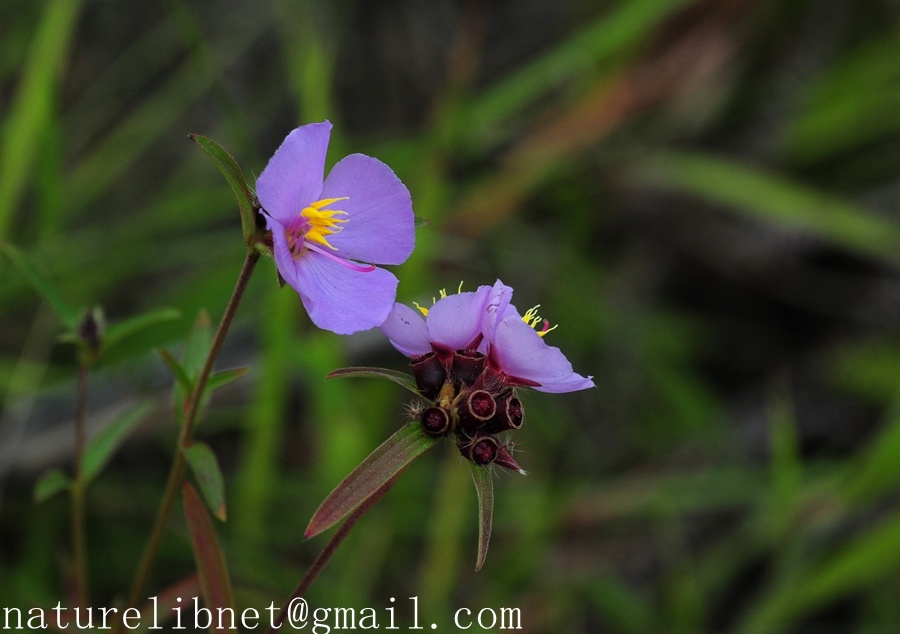- Scientific Name: Osbeckia chinensis Linnaeus
- Ref: Sp. Pl. 1: 345. 1753.
- Synonym: Osbeckia kainantensis Masamune.
- Chinese Common Name:金锦香jin jin xiang
- Family:Melastomataceae
- Genus: Osbeckia
- Distribution: Grasslands on mountain slopes, sparse forests, trailsides; near sea level to 1500 m. Anhui, Fujian, Guangdong, Guangxi, Guizhou, Hainan, Hubei, Hunan, Jiangsu, Jiangxi, Jilin (Changbai Shan), Sichuan, Taiwan, Yunnan, Zhejiang [Cambodia, India, Indonesia, Japan, Laos, Malaysia, Myanmar, Nepal, Philippines, Thailand, Vietnam; Australia].
- Photo: 10/02/2012,Taishun,Zhejiang
Herbs or shrubs, 20-100 cm tall, erect. Stems 4-sided, appressed strigose. Petiole very short or up to 1 cm, strigose; leaf blade linear, linear-lanceolate, oblong-ovate, elliptic-ovate, or sometimes ovate-lanceolate, 2-5(-9) × 0.3-1(-3.2) cm, stiffly papery, both surfaces strigose, secondary veins 1 or 2 on each side of midvein, tertiary veins inconspicuous, base obtuse, subrounded, rounded, or subcordate, margin entire, apex acute. Inflorescences terminal, capitate, 2-8-flowered, with 2-6 bracteal leaves at base; bracts sessile, ovate, pubescent or adaxially glabrous. Hypanthium usually pink, 6-6.5 mm, glabrous or 1-5 setose tuberculate. Calyx lobes 4(or 5), triangular-lanceolate, margin ciliate, setose between lobes. Petals 4 or 5, pink to pale purple, obovate, 1-1.5 × ca. 1.3 cm, margin ciliate, apex apiculate or rounded. Stamens 8 or 10, inclined to one side; filaments as long as anthers; anthers narrowly lanceolate, beaked; connective bases slightly inflated. Ovary subglobose, 4- or 5-celled, apex densely setose or strigose. Capsule purplish red, ovoid-globose, ca. 6 × 4 mm, glabrous or setiform tuberculate.(Flora of China)
